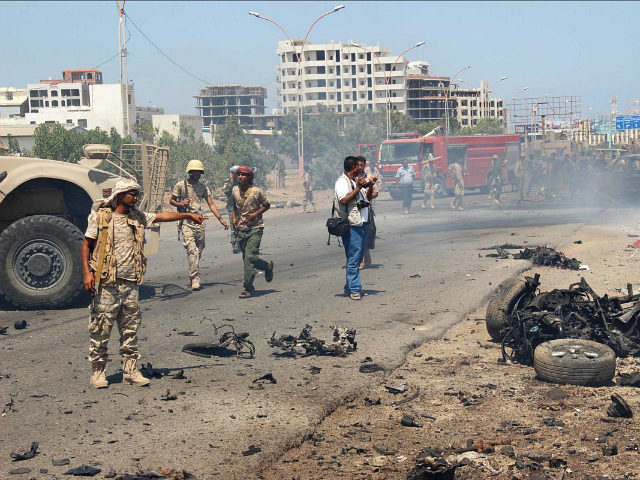The United States obtained information on “hundreds” of al-Qaeda-linked “contacts” as part of the intelligence gathered during the U.S. military raid targeting the jihadist group in Yemen last month, CNN has learned from several unnamed American officials.
Currently, the United States is trying to find and monitor the al-Qaeda in the Arabian Peninsula (AQAP)-affiliated individuals, some of whom are believed to be in Western countries but not the United States.
Various news outlets and critics of President Donald Trump’s administration have attempted to dismiss the value of the intelligence retrieved from the Jan. 29 raid as insignificant, suggesting that U.S. Navy Senior Chief William “Ryan” Owens’s death during the operation was in vain.
CNN reports:
The terabyte’s worth of [al-Qaeda raid] intelligence gathered from computers and cell phones is now being reviewed at the National Media Exploitation Center outside Washington, which analyzes documents, electronic media, cell phones, video and audio tapes seized on overseas missions.
Defense officials have told CNN that information pertaining to the location of safe havens, explosives manufacturing, training and targets was acquired in the January ground operation.
Echoing the unnamed officials who spoke to CNN, an anonymous senior American official told ABC News that “intelligence gathered during the raid has provided insights into AQAP’s activities, particularly the terror group’s recruiting, training techniques and explosives manufacturing.”
“The official said the intelligence has provided information about who the terror group is targeting,” notes ABC News, adding, “Information obtained during the raid is still being used by U.S. intelligence.”
Army Gen. Joseph Votel, the commander of U.S. Central Command (CENTCOM), has also defended the value of the intelligence gathered during the raid.
“The object was to go in and collect intelligence,” Gen. Votel who has called the mission “successful,” told CBS News. “We accomplished that, so from that perspective it was successful. I certainly understand how the [Owens] family would look at this in a different light.”
The Pentagon and the White House, including President Trump, have consistently described the January raid as “successful,” insisting that it produced valuable intelligence.
According to the Pentagon, U.S. forces executed at least 14 AQAP fighters during the operation, some of whom were women.
In addition to the death of Navy SEAL Owens, al-Qaeda wounded three other U.S. service members.
Citing Yemeni villagers, the Bureau of Investigative Journalism, reported that 25 civilians lost their lives during the raid, including nine children.
The U.S. military destroyed a Marine MV-22 Osprey aircraft, believed to be valued at about $70 million, to prevent it from falling into enemy hands after a “hard landing” during the operation.
Currently, the U.S. military is carrying out several investigations into the Yemen raid, which is standard whenever an operation results in fatalities and the loss of equipment.
Bill Owens, the father of the Navy SEAL hero who lost his life during the offensive, is demanding answers and the White House has vowed to oblige him.
The Yemen-based AQAP is considered the most dangerous branch of the terrorist group.
“AQAP has taken advantage of ungoverned spaces in Yemen to plot, direct and inspire terror attacks against the United States and our allies,” declared U.S. Navy Capt. Jeff Davis, a Pentagon spokesman, on Thursday after a series of U.S. airstrikes targeting the jihadist group.
“Four separate US drone strikes killed at least seven suspected al-Qaeda members in Yemen,” reports Al Arabiya.
In total, “more than 20 strikes targeted AQAP militants, equipment and infrastructure in the Yemeni governorates of Abyan, Al Bayda and Shabwah,” explained Capt. Davis, adding, “The strikes will degrade the AQAP’s ability to coordinate external terror attacks and limit their ability to use territory seized from the legitimate government of Yemen as a safe space for terror plotting. Targets of the strikes included militants, equipment, infrastructure, heavy weapons systems and fighting positions.”
A U.S. defense official told CNN on condition of anonymity that airstrikes are not linked to intelligence gathered during the Jan. 29 operation “since the strikes had been planned for some time.”

COMMENTS
Please let us know if you're having issues with commenting.